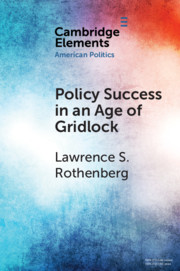Element contents
Policy Success in an Age of Gridlock
Published online by Cambridge University Press: 04 July 2018
Summary
- Type
- Element
- Information
- Series: Elements in American PoliticsOnline ISBN: 9781108628044Publisher: Cambridge University PressPrint publication: 27 June 2018
References
- 14
- Cited by

